Discover how a bimodal integration strategy can address the major data management challenges facing your organization today.
Get the Report →Feed Okta Data into FineReport
How to set Okta data as a JDBC data source in FineReport.
The CData JDBC Driver for Okta fully implements the JDBC standard and can provide Okta data connectivity to a wide variety of BI, reporting, and ETL tools and custom applications. In this article, we explain how to set Okta data as JDBC data source in FineReport and view Okta data as a table in the Report Designer.
Set Up a JDBC Data Source of Okta Data
Follow the instruction below to set Okta data as a FineReport database connection.
- Copy the cdata.jdbc.okta.jar file from the lib folder in the CData JDBC Driver for Okta installation directory to the lib folder of the FineReport installation directory. You will need to copy the cdata.jdbc.okta.lic file as well.
- From the Server tab, select Define Data Connection, click to add a new connection, and click JDBC.
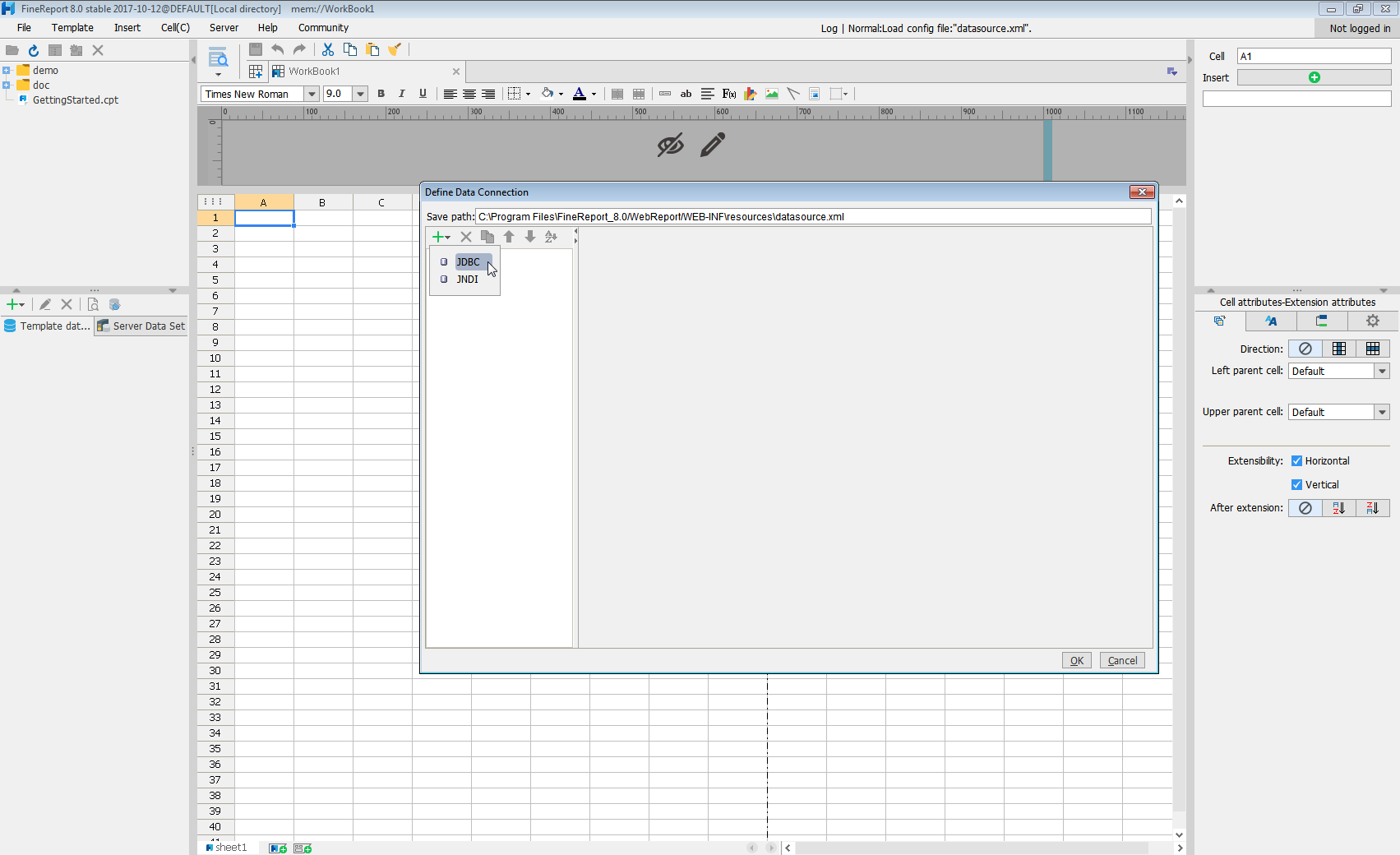
Next we will set up the data connection definition in the window.
- Database: Others
- JDBC Driver: cdata.jdbc.okta.OktaDriver
-
URL: A standard JDBC connection string using semicolon-separated connection properties.
To connect to Okta, set the Domain connection string property to your Okta domain.
You will use OAuth to authenticate with Okta, so you need to create a custom OAuth application.
Creating a Custom OAuth Application
From your Okta account:
- Sign in to your Okta developer edition organization with your administrator account.
- In the Admin Console, go to Applications > Applications.
- Click Create App Integration.
- For the Sign-in method, select OIDC - OpenID Connect.
- For Application type, choose Web Application.
- Enter a name for your custom application.
- Set the Grant Type to Authorization Code. If you want the token to be automatically refreshed, also check Refresh Token.
- Set the callback URL:
- For desktop applications and headless machines, use http://localhost:33333 or another port number of your choice. The URI you set here becomes the CallbackURL property.
- For web applications, set the callback URL to a trusted redirect URL. This URL is the web location the user returns to with the token that verifies that your application has been granted access.
- In the Assignments section, either select Limit access to selected groups and add a group, or skip group assignment for now.
- Save the OAuth application.
- The application's Client Id and Client Secret are displayed on the application's General tab. Record these for future use. You will use the Client Id to set the OAuthClientId and the Client Secret to set the OAuthClientSecret.
- Check the Assignments tab to confirm that all users who must access the application are assigned to the application.
- On the Okta API Scopes tab, select the scopes you wish to grant to the OAuth application. These scopes determine the data that the app has permission to read, so a scope for a particular view must be granted for the driver to have permission to query that view. To confirm the scopes required for each view, see the view-specific pages in Data Model < Views in the Help documentation.
Built-in Connection String Designer
For assistance in constructing the JDBC URL, use the connection string designer built into the Okta JDBC Driver. Either double-click the JAR file or execute the jar file from the command-line.
java -jar cdata.jdbc.okta.jarFill in the connection properties and copy the connection string to the clipboard.
![Using the built-in connection string designer to generate a JDBC URL (Salesforce is shown.)]()
When you configure the JDBC URL, you may also want to set the Max Rows connection property. This will limit the number of rows returned, which is especially helpful for improving performance when designing reports and visualizations.
A typical JDBC URL is below:
jdbc:okta:Domain=dev-44876464.okta.com; - Click Connection pool attributes and set Test before getting connections to No.
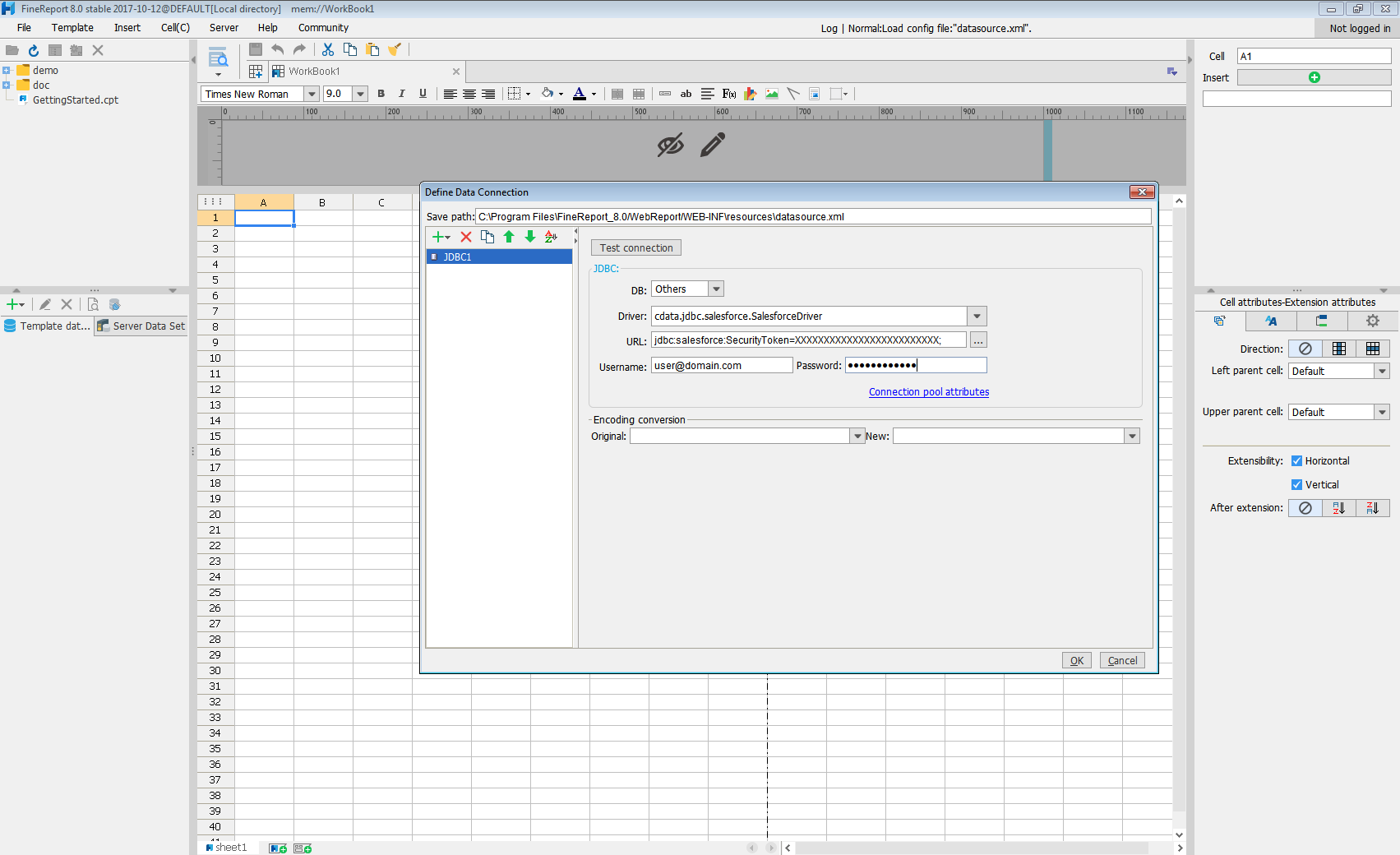
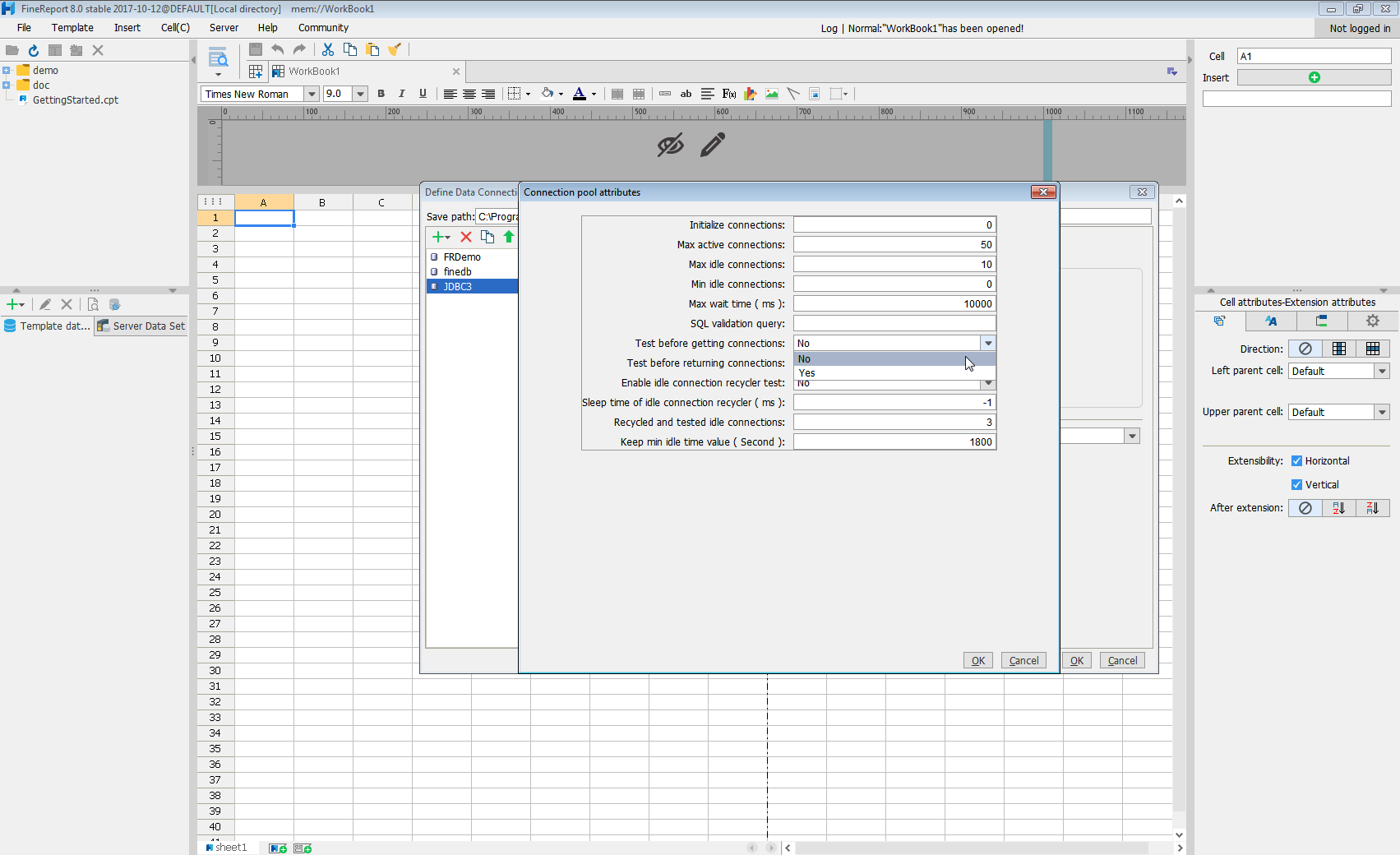
Click Test connection to ensure you have configured the connection properly. With the connection to Okta set up, you can use it as FineReport data source.
Select Okta Data in the Report Designer.
- Click to add a new template data set and select DB query to open the database query window.
- Choose the JDBC connection that you created from the dropdown list.
- The Okta entities will appear as tables on the left pane.
- Write a SELECT statement for the Okta data tables and columns that you want to load.
- Click preview and data is shown as table.
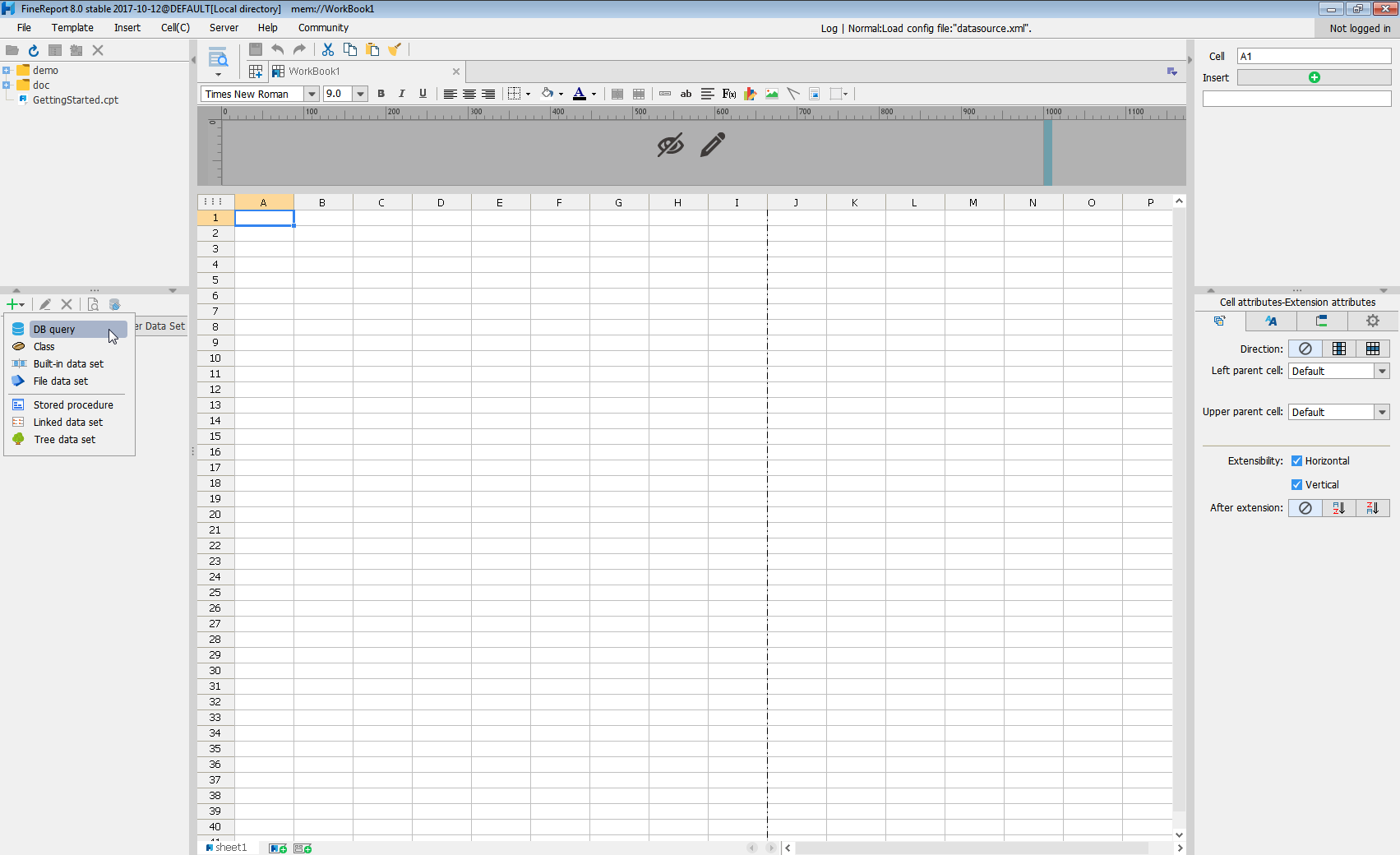
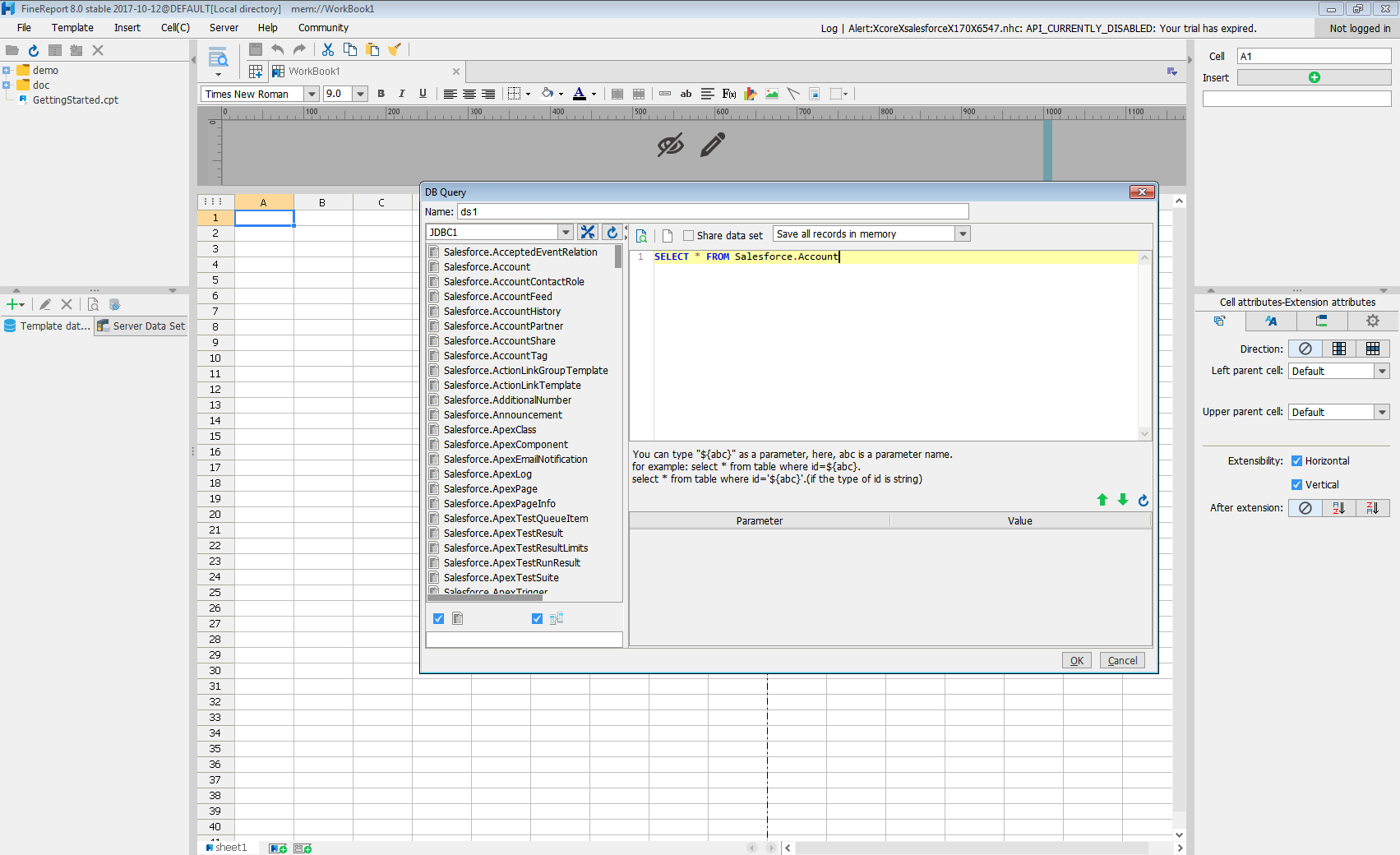
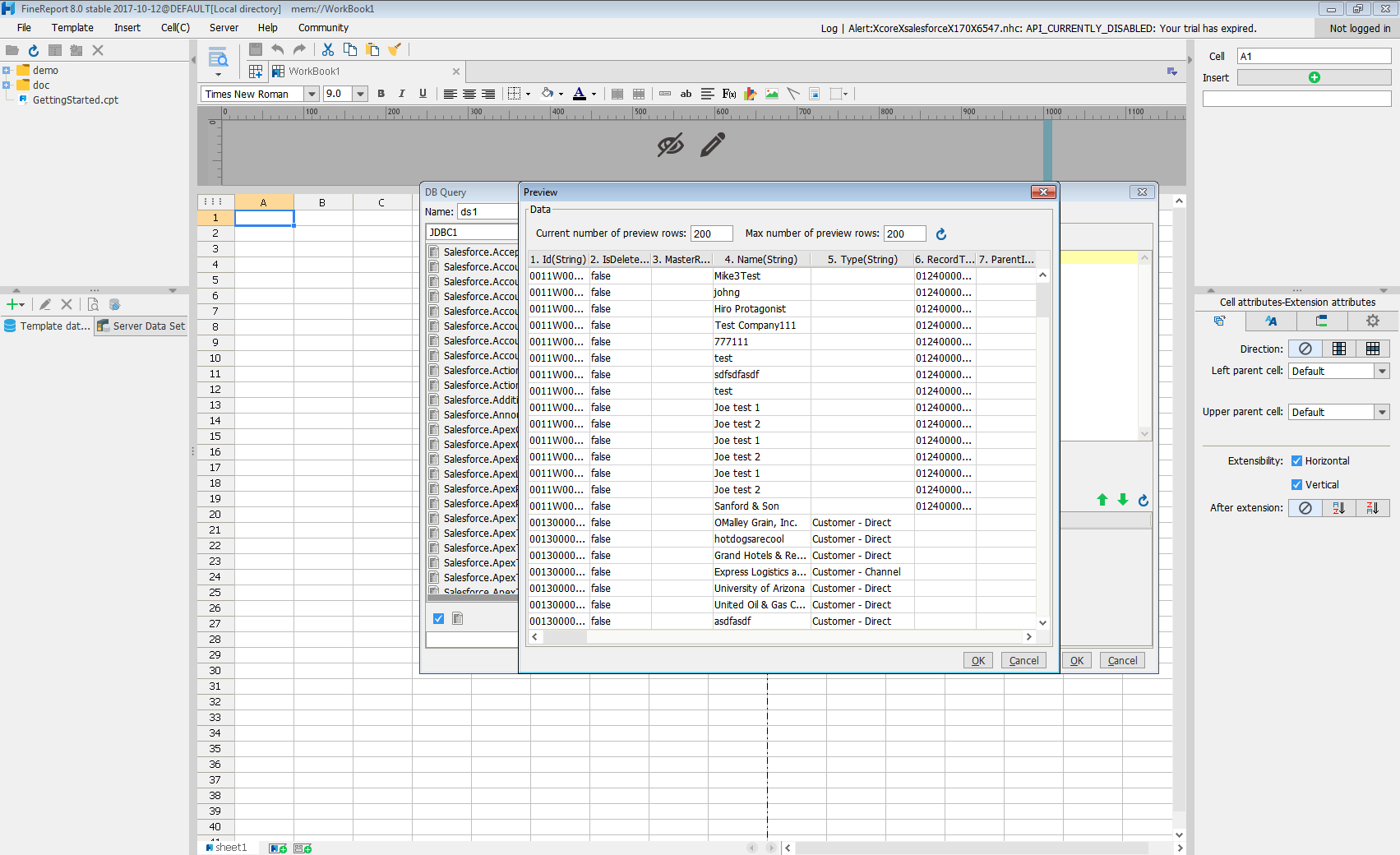
With these simple steps, Okta can be used as a JDBC data source in FineReport.






